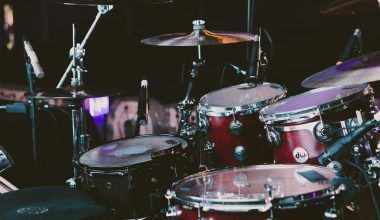Amazon Music has emerged as a significant player in the digital music streaming industry, providing a robust platform for artists to share their music with a global audience. For artists, understanding the various services offered by Amazon Music and the payout system is crucial to maximizing their revenue and reach. This article explores the range of services Amazon Music offers to artists and explains how the payout system works.
Amazon Music Services for Artists
Amazon Music provides several services tailored to artists looking to grow their audience, engage with fans, and monetize their music. Here are the key services available to artists on Amazon Music:
- Amazon Music for Artists Platform: Amazon Music for Artists is a comprehensive tool that provides artists with insights and data to help them understand their audience better. Artists can access information such as the number of streams, listener demographics, and even the cities where their music is most popular. This data can be invaluable for planning tours, releasing new music, and targeting marketing efforts.
- Amazon Music Unlimited and Prime Music: Amazon Music offers two main streaming services: Amazon Music Unlimited, a premium subscription service, and Prime Music, which is available to Amazon Prime members. By making their music available on these platforms, artists can reach millions of subscribers globally, ensuring broad exposure.
- Artist Profile Customization: Through the Amazon Music for Artists platform, artists can customize their profiles by adding photos, updating bios, and linking their social media accounts. A well-maintained artist profile can help with fan engagement and create a cohesive brand presence across digital platforms.
- Amazon Music HD: Amazon Music HD offers high-definition streaming, giving audiophiles a chance to enjoy music in higher quality. For artists, this is an opportunity to showcase their work with superior sound quality, attracting a dedicated audience that values sound fidelity.
- Integration with Alexa: Amazon Music’s integration with Alexa devices provides artists with unique opportunities to reach listeners through voice commands. Listeners can simply ask Alexa to play their favorite artist or discover new music, which can significantly increase an artist’s visibility and streaming numbers.
- Music Promotion and Marketing Tools: Amazon Music offers promotional opportunities through playlists, stations, and Amazon Originals. Artists can pitch their music for inclusion in curated playlists and Amazon Originals, providing a chance for greater exposure. Additionally, Amazon Music’s marketing tools enable artists to promote their releases effectively and target specific audiences.
Payout System for Artists on Amazon Music
Amazon Music’s payout system, like most streaming services, is based on a pro-rata share of subscription revenue, combined with ad revenue for free-tier streams. Here’s how it works in detail:
- Revenue Pool and Pro-Rata Share: The payout to artists depends on the total revenue generated by Amazon Music from subscriptions and ads, and the share of streams the artist’s music represents within the platform. This means that an artist’s earnings are proportional to the total number of streams their music receives compared to the total number of streams on Amazon Music.
- Pay Per Stream Model: While Amazon Music does not publicly disclose an exact pay-per-stream rate, estimates suggest it pays around $0.004 to $0.005 per stream. However, this rate can vary depending on several factors, including the listener’s subscription plan (Amazon Music Unlimited vs. Prime Music), the country of the listener, and whether the stream is from an ad-supported or premium service.
- Royalties for Different Types of Streams: Amazon Music pays two types of royalties: mechanical royalties and performance royalties. Mechanical royalties are paid for the reproduction of music, while performance royalties are paid whenever a song is played publicly. Artists usually receive performance royalties through their performance rights organizations (PROs), and mechanical royalties are typically handled through music publishers or mechanical rights societies.
- Direct Licensing Deals and Aggregators: Artists can upload their music to Amazon Music either directly through a licensing deal or through music distributors (aggregators) like TuneCore, DistroKid, or CD Baby. These distributors usually charge a fee or take a percentage of the revenue earned. It’s important for artists to choose the distribution method that aligns with their goals and revenue expectations.
- Payment Schedule: Payouts from Amazon Music are usually distributed to artists and rights holders on a monthly basis, though there may be a delay depending on the distributor’s payment policies. For example, some aggregators may hold payments until the artist’s earnings reach a minimum threshold.
Maximizing Earnings on Amazon Music
Artists looking to maximize their earnings on Amazon Music should consider the following strategies:
- Optimize Profile and Content: Keep the artist profile updated with relevant information, engaging photos, and links to social media. Ensuring that all metadata is correctly filled out can help increase discoverability.
- Engage with Fans: Use Amazon Music’s tools to engage with fans, such as creating personalized messages, hosting virtual events, or utilizing Alexa skills to enhance fan interaction.
- Pitch for Playlists and Amazon Originals: Regularly pitch new releases for inclusion in Amazon-curated playlists and Amazon Originals. Being featured in a popular playlist can significantly boost streams and exposure.
- Leverage Data and Insights: Use the analytics provided by Amazon Music for Artists to understand listener behavior and plan marketing and promotion strategies effectively.
- Utilize Cross-Promotion Opportunities: Integrate Amazon Music promotion with other platforms like social media, email newsletters, and artist websites to drive more traffic and streams.





